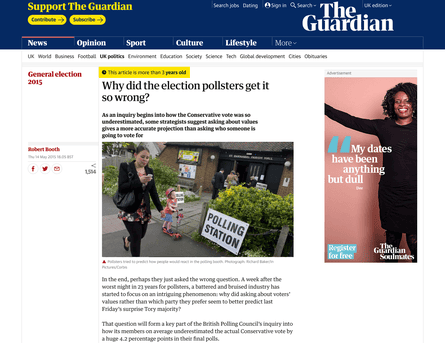9 Easy Facts About News Articles Explained
9 Easy Facts About News Articles Explained
Blog Article
Fascination About News Articles
Table of ContentsThe News Articles StatementsNews Articles for DummiesAll about News ArticlesLittle Known Questions About News Articles.Some Known Factual Statements About News Articles
Excellent understanding of different subjects gives trainees a competitive side over their peers. Despite the fact that digital and social media are easily easily accessible, we ought to not fail to remember exactly how essential it is to read the newspapers. Parents should attempt and inculcate the behavior of reading a paper as a day-to-day regimen to proceed the heritage of the adored print tool.News stories also have at the very least one of the complying with important features family member to the desired target market: closeness, importance, timeliness, human passion, oddity, or repercussion.
Within these restrictions, news tales likewise aim to be detailed. Among the larger and a lot more respected papers, justness and equilibrium is a major factor in providing information.
Newspapers with an international target market, for instance, often tend to use an extra formal style of composing. News Articles.; common style overviews include the and the United States Information Design Publication.
Not known Incorrect Statements About News Articles
Generally, journalists will not make use of a long word when a short one will certainly do. They make use of subject-verb-object construction and vibrant, active prose (see Grammar). They supply anecdotes, instances and metaphors, and they seldom depend upon generalizations or abstract concepts. News authors attempt to prevent using the same word greater than when in a paragraph (occasionally called an "echo" or "word mirror").
Nevertheless, headlines occasionally leave out the topic (e.g., "Jumps From Watercraft, Catches in Wheel") or verb (e.g., "Pet cat woman lucky"). A subhead (additionally subhed, sub-headline, subheading, subtitle, deck or dek) can be either a secondary title under the main heading, or the heading of a subsection of the short article. It is a heading that precedes the main text, or a team of paragraphs of the primary text.

of a short article subject, informant, or interviewee), it is referred to as a pulled quote or draw quote. Extra billboards of any one of these types may show up later in the write-up (particularly on succeeding pages) to attract more reading. Journalistic web sites occasionally utilize computer animation strategies to swap one signboard for another (e.g.
The Basic Principles Of News Articles
Such billboards are additionally made use of as guidelines to the short article in various other sections of the publication or site, or as ads for the item in various other magazine or sites. News release of the Swiss government. Regular framework with title, lead paragraph (recap in strong), other paragraphs (information) her explanation and contact info.

Instance of a hard-lead paragraph NASA is proposing another area job. The agency's budget plan request, introduced today, included a plan to send another mission to the Moon. This time around the firm intends to establish a long-lasting facility as a jumping-off factor for other room journeys. The spending plan requests around $10 billion for the project.
The NASA statement came as the firm asked for $10 billion of appropriations for the task. An "off-lead" is the 2nd most vital front web page information of the day. The off-lead shows up either in the leading left edge, or directly listed below the lead on the right. To "hide the lead" is to begin the post with background details or details of additional importance to the visitors, forcing them to learn more deeply into a post than they must have to in order to uncover the vital points.
The Best Guide To News Articles
Typical use is that a person or more sentences each form their own paragraph. Reporters usually define the organization or framework of a newspaper article as an upside down pyramid. The crucial and most fascinating aspects of a story are put at the beginning, with sustaining information following in order of lessening relevance.
It permits people to explore a subject to only the depth that their inquisitiveness takes them, and without the imposition of details or nuances that they can consider unimportant, but still making that information readily available to more interested viewers. The inverted pyramid framework additionally enables articles to be cut to any type of approximate size during design, to fit in the room readily available.
Some authors begin their stories with the "1-2-3 lead", yet there are several kinds of lead readily available. This layout inevitably begins with a "5 Ws" opening up paragraph (as described over), followed by an indirect quote that offers to sustain a major aspect of the initial paragraph, and afterwards a straight quote to sustain Recommended Site the indirect quote. [] A kicker can refer to multiple things: The last story current broadcast; a "happy" tale to end the program.
Longer write-ups, such as publication cover write-ups and the pieces that lead the inside areas of a newspaper, are recognized as. Function stories vary from straight information in several means.
News Articles - An Overview
The reporter often information interactions with interview subjects, making the item much more individual. An attribute's initial paragraphs often associate an intriguing minute or occasion, as in an "unscientific lead". From the details of an individual or episode, its sight quickly broadens to abstract principles about the story's topic. The area that signals what a feature is around is called the or billboard.

The Editor's Tool kit: A Referral Overview for Beginners and Professionals (2001) Allan M. Siegal and William G. Connolly. The New York Times Handbook of Style and Usage: The Authorities Design Overview Utilized by the Writers and Editors of the World's A lot of Reliable Paper (2002) M. L. Stein, Susan Paterno, and R.
Report this page